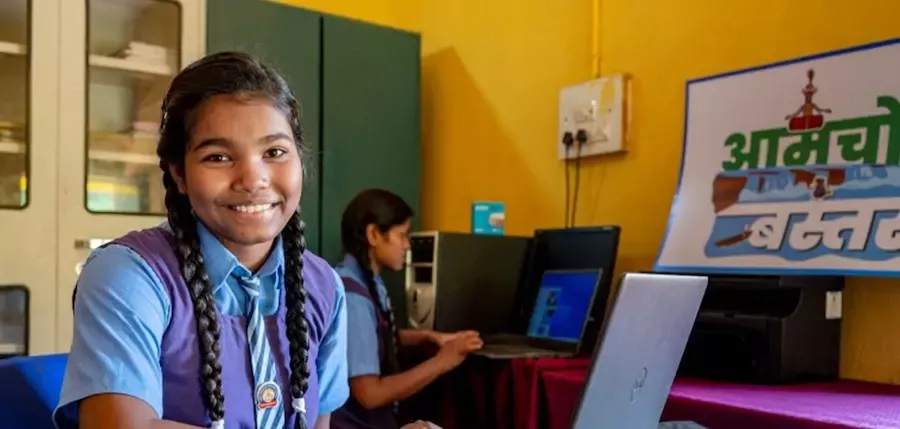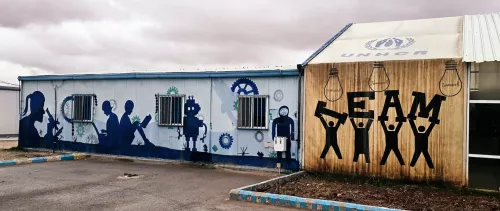
UN0517091/Panjwani via UNICEF
The ability to own a mobile device and access the Internet can be life-changing. The information, services, and learning tools available online are benefitting billions of people worldwide, and the number of mobile users and people connected to the worldwide web keeps growing each year.
Yet deeply entrenched gender biases still restrict the access of many women and girls to the plethora of online opportunities. Fewer girls and women own devices and use new digital technologies compared to boys and men, particularly in low- and middle-income countries.
More than ever, this gender disparity prevents countless women and girls from reaching their full potential.
What the divide looks like in Asia
Globally, only 57 per cent of women were using the Internet by 2020, compared to an estimated 62 per cent of men, according to the latest Facts and Figures from the International Telecommunication Union (ITU). Across Asia and the Pacific, an estimated 54 per cent of women use the Internet compared to 59 per cent of men, reflecting a comparable digital gender gap amid lower usage overall.
But the divide is especially pronounced in South Asian countries, where women are 36 per cent less likely to use the Internet than men. Mobile industry association GSMA also reports a significant gender gap in mobile phone ownership in South Asia.
Stark disparities are evident between women and men, as well as between girls and boys, to obtain and use both Internet services and digital devices such as laptops and smart phones. Twice as many boys as girls have Internet access in Nepal, while four times as many do in Pakistan, UNICEF reports.
“Families in marginalized communities prioritize giving the limited digital devices in households to boys,” observed 20-year-old Simran Uikey from Bhopal, India.
“Poor network connectivity means one must go where one can get a good network [signal],” she adds. “Sometimes such places are outside villages, in fields, or forests. Boys can go there, but girls are not allowed out of fear for their safety, and the mentality that girls go alone to a forest or field is not proper.”
Female students consequently tend to face greater difficulties with learning online. Female adolescents felt they learned less than their male counterparts during pandemic-related school closures, UNICEF’s research in India shows.
Girls must normally also tend to household chores or care for siblings, reducing their time for school and studying.
Gender disparities are compounded further for girls and women with disabilities, amid a dearth of accessible learning opportunities and tools even when primary and secondary schools seem ready for online teaching. “I am blind, and the system is not ready for me,” said Zaaya Ahmed Zubair from Maldives.
Developing skills and expanding opportunities
Bringing more girls and young women into the tech sector could spur faster growth of gender-responsive technologies. This, in turn, could open new career paths for women in the field of information and communication technologies (ICTs) and beyond.
But for this to happen, more girls and women need to be able to take advantage of the digital learning tools and devices available now.
Since June 2021, UNICEF South Asia, ITU and US-based non-profit organization Code.org have collaborated to encourage women and girls’ participation in ICT. Together, we have organized ‘ICT for Girls’ events, along with ‘Hour of Code’ workshops co-led by female ICT students and youth leaders.
Each workshop offers a one-hour introductory session on computer science and promotes the idea that anyone can learn how to code. These courses are available for free on the UNICEF and Code.org Regional Hour of Code resource hub.
The recent Girls in Tech Day in Bangladesh – organized by UNICEF South Asia, ITU’s Regional Office for Asia and the Pacific, and Code.org, in cooperation with the Government of Bangladesh – celebrated digital equality for women and girls, along with successes with implementing equal ICT access regardless of gender.
Likewise, in Pakistan, the Ministry of Information and Technology and Telecommunication joined UNICEF South Asia and ITU last September for a virtual panel session, “Talking tech: Girls and Women in ICT”, to advocate for the importance of digital skills and access for girls.
More recently, we have conducted a series webinars promoting science, technology, engineering, and mathematics (STEM) education among girls, as well as a coding workshop for girls and young women highlighting the importance of digital gender equality in Asia and the Pacific.
Last year’s ICT for Girls events and Hour of Code sessions culminated in a wider ‘Regional Dialogue on Digital Transformation: Gearing up for inclusive and sustainable development’, held virtually in December.
The series continues this year, with Girls in ICT Day celebrations in Bangkok on 28 April celebrating progress both in Thailand and across Asia and the Pacific. The latest events and workshops also underline the crucial need for a safe and empowering online experience for children and young people.
Digital cooperation for a better future
UNICEF, ITU, and Code.org continue working jointly to reduce digital gender gaps worldwide, including across Asia-Pacific and specifically in South Asia. Our local coding events have reached hundreds of millions across the world, and we continue exploring opportunities together.
Through our collective efforts, we are committed overcoming the prevalent digital gender divide within schools, homes, governments, and UN agencies, as well as in academia, the private sector, and youth organizations across Asia.
We need to keep building on this momentum to address the gaps in opportunities when it comes to accessing, leveraging, and benefiting from technology. Together, we can establish a better society and a sustainable, more equitable future for all.
Learn more about ITU’s work on digital development and gender, UNICEF’s gender equality and reimagining education programmes, Code.org and hourofcode.com.


